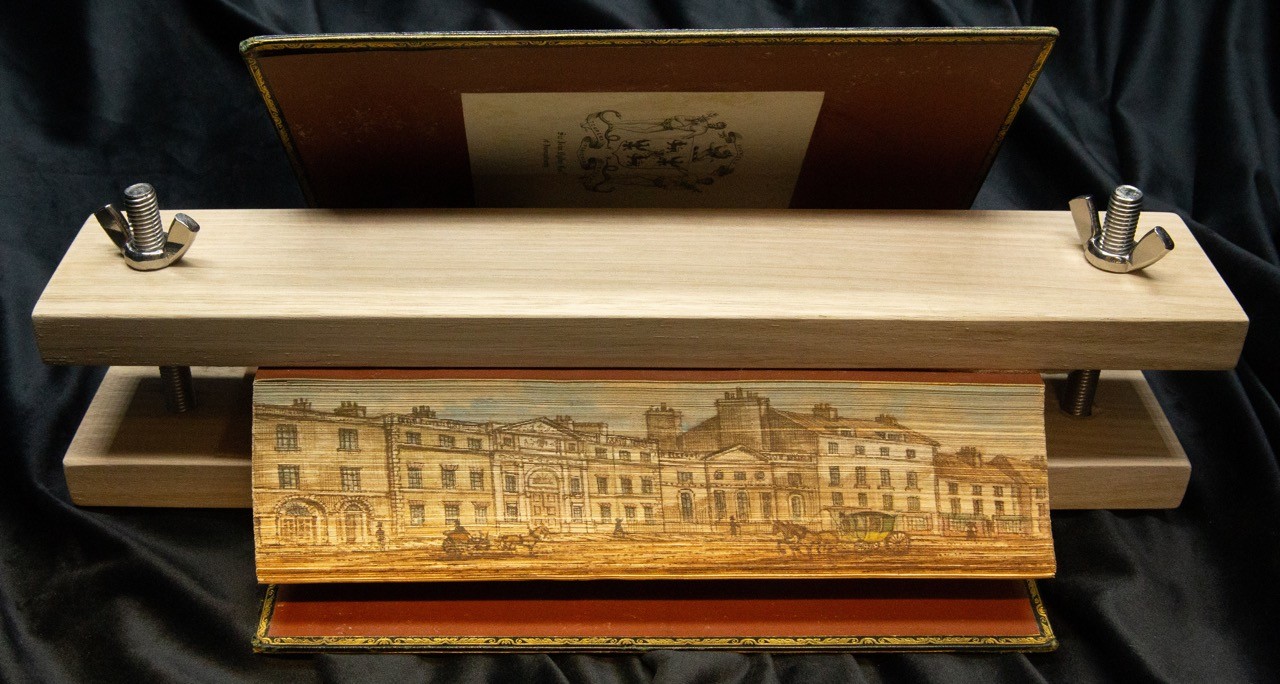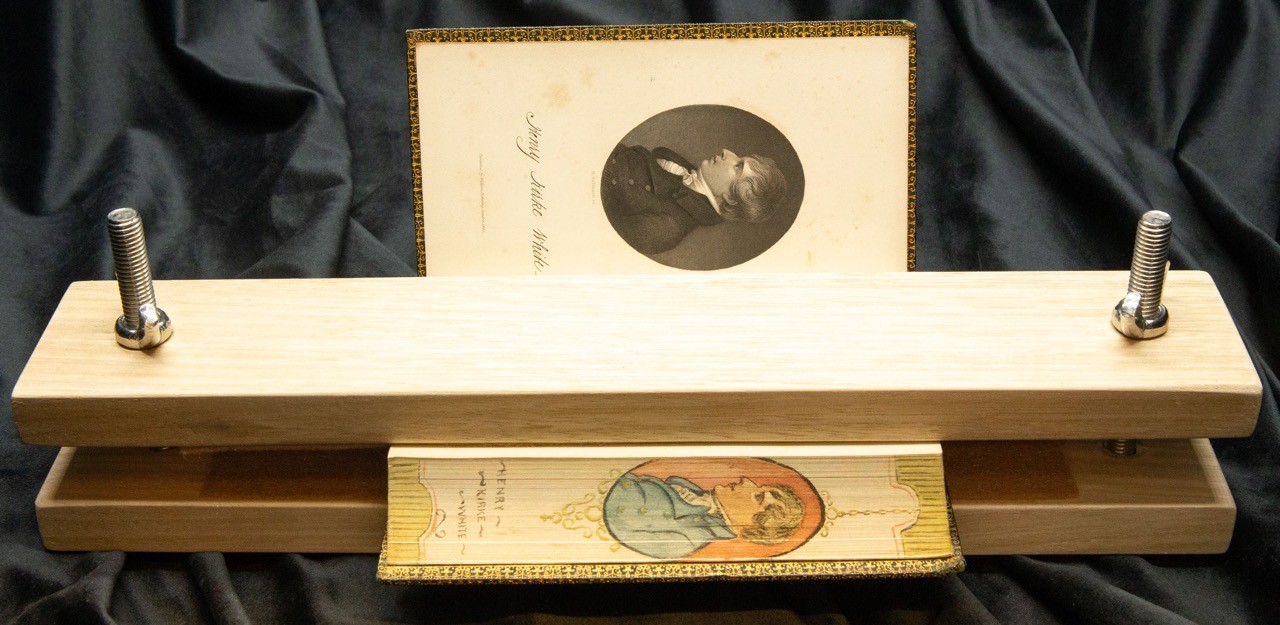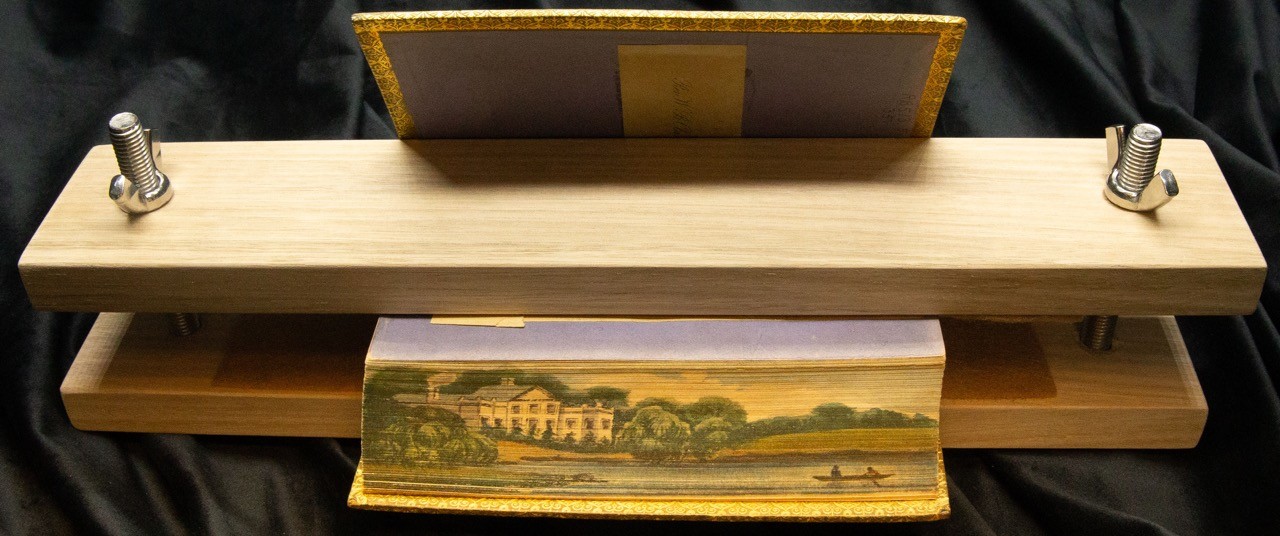Hidden Fore-edge Paintings

Did you know that the gilt edges of books sometimes hide secret paintings? These miniature masterpieces are known as fore-edge paintings.
Fore-edge paintings were created by fanning out the pages of a book and then clamping them to create an angled surface for an artist to paint on. Paintings were created with watercolours and once completed, the book was closed and the edges gilded to hide the painting from sight. Fore-edge paintings gained popularity during the 19th century and paintings could be contemporary with the book’s publication date or could have been added by a later artist.
A selection of recently-digitised fore-edge paintings are now available to view on the Library's Digital Collections website. The collection features nine books and a total of eleven paintings. How is this possible? A variation from the standard fore-edge painting is the double fore-edge painting which refers to two separate images on the same fore-edge of a book. These required great skill to execute, as after the completion of the first painting the pages would be fanned in the other direction to accommodate a second painting.
A rare example of a double fore-edge painting is a book from the Deane Collection (Deane RB 4754.75). The Library's copy has two views of the Crystal Palace, as originally designed by Joseph Paxton, and as a venue for the Great Exhibition in 1851.
Another variation is the split-double fore-edge painting, such as the 18th century bible in the Library's collection (RB 4696.97) with two scenes of villagers harvesting hay, each covering half the text block.
Two of the books in this collection feature the work of English poet Henry Kirke White. One is adorned with a portrait of Henry Kirke White (Deane RB 1285.1 23) and the other a landscape of Nottingham (Deane RB 1285.1 14).
Other highlights from the collection are the three-volume set of Samuel Butler’s Hudibras (RB4719.69), embellished with streetscapes of London and Izaak Walton’s Complete Angler (RB 513.5 35), with a suitably serene scene of a fishing boat on a lake.
The photography of this collection was made possible with a custom-made wooden book press crafted by a member of the Rare Books and Special Collections team.


Related information
Contact
If you're interested in researching these items, or utilising them in a class or program, please get in touch with our Rare Books and Special Collections team via email.